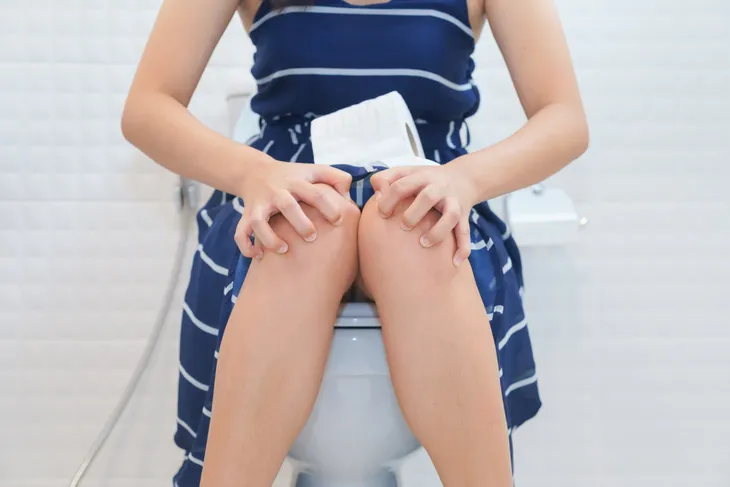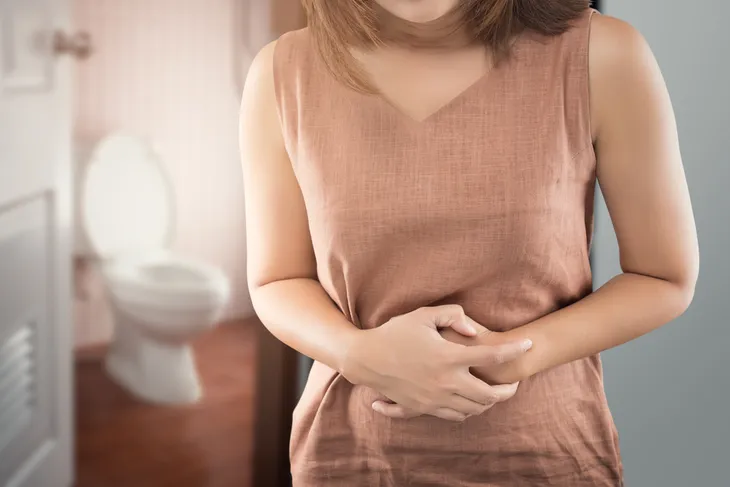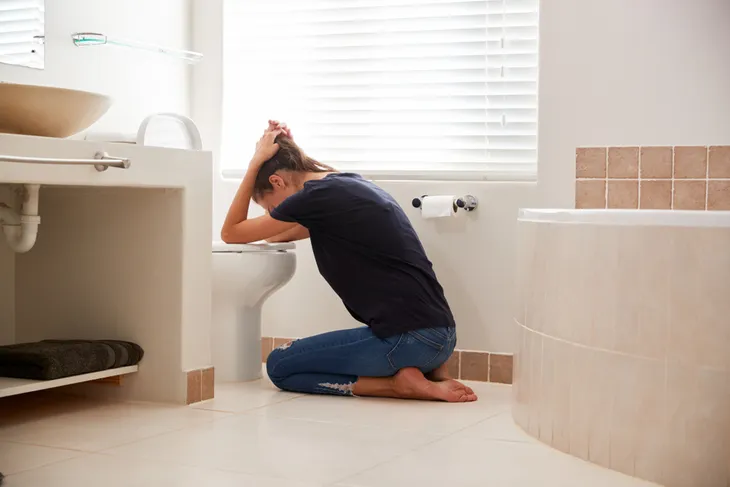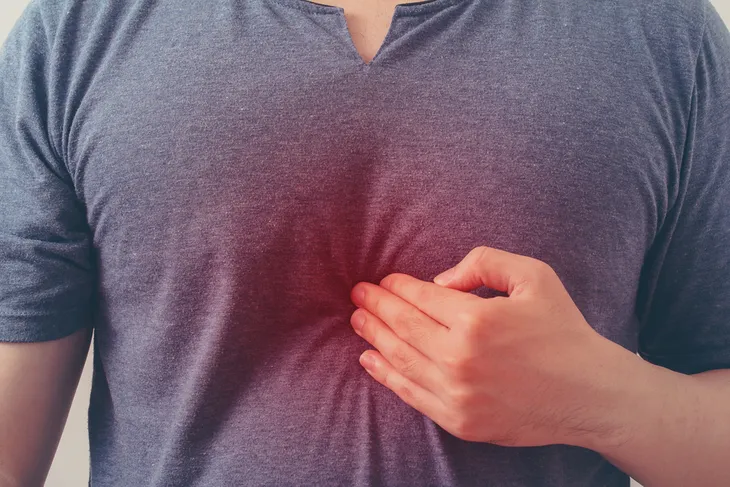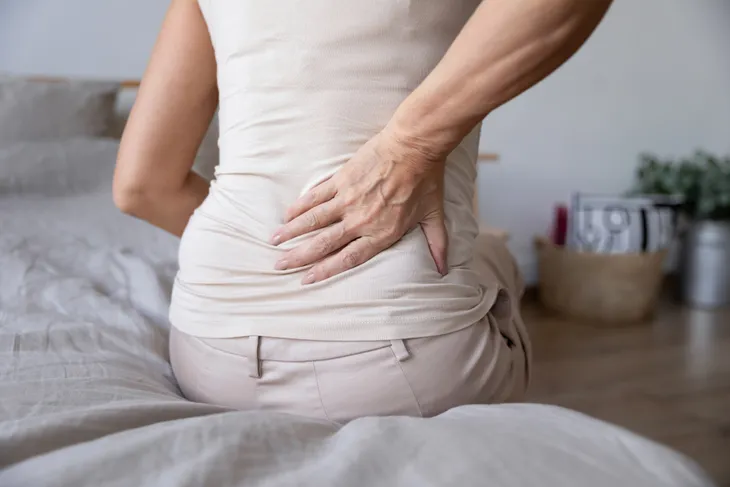Your gallbladder, a small organ that sits just below your liver, has an important function—it releases bile (produced by the liver) into the intestines and helps break down fats. However, many Americans experience problems with their gallbladders, which leads to a change of diet or the removal of the organ altogether.
Depending on risk factors such as gender (females are more likely to have these problems), age and lifestyle, you can develop gallstones that block the flow of bile, or you can develop a range of gallbladder diseases. In any case, you will experience symptoms that are less than pleasant. Here are 14 signs of gallbladder attack to watch for…
Think you may have a gallbladder problem? Try Dr. Berg’s Gallbladder Cleanse – an Amazon 4.5+ star bestseller with over 1,150 consumer ratings. (As an Amazon associate, this site earns from qualifying purchases).
1. Acute Pain
If you have pain in the upper right side or middle of your abdomen shortly after consuming a meal, then you may have acute cholecystitis, which Healthline describes as the most common gallbladder disease.
This condition is usually caused by gallstones (from calcium buildup or cholesterol), but it can also result from other factors, such as tumors. The pain can be sharp to dull aching and extend all the way up to your right shoulder. This condition can lead to a chronic version, which will lead to your gallbladder losing its function.
2. Fever
If you develop a fever (usually accompanied by abdominal pain) then you may be dealing with a gallbladder problem. Mayo Clinic notes that your gallbladder can become inflamed when a gallstone gets trapped in the neck of the organ, resulting in a disease called cholecystitis.
The inflammation is caused by the buildup of bile in the gallbladder due to the gallstone blockage, notes the Mayo Clinic. It also warns that untreated cholecystitis can lead to “serious, sometimes life-threatening complications, such as a gallbladder rupture.” Removal of the organ is common in this case.
3. Jaundice
The yellowing of the skin and whites of the eyes can be a symptom of gallbladder disease, according to Merck Manuals. The yellowing of the skin is the result of an abundance of bilirubin in your blood, which is referred to as hyperbilirubinemia.
While jaundice can be the result of various problems, gallbladder issues are in that group. Bilirubin is usually eliminated from the body through bile ducts and into your stool or urine, but a blockage of the ducts can result in a buildup of this substance, which ends up in your skin (giving it an orange-yellow hue).
4. Irregular Stool Color
One of the telltale signs of a gallbladder issue are stools that are lighter in color as compared to previous. LiveStrong said you might also have “chalky” looking bowel movements. The reason is because of excess fats in the stool, which is not being effectively broken down by bile.
If you’re having any of the problems already described and not one to examine your own stool on a regular basis, perhaps now is a good time to start for the sake of your health. In addition a trip to your doctor for some tests may be in order.
5. Diarrhea
Diarrhea is another problem that may be related to gallbladder disease. It is another sign that there’s excess fats in the digestive tract that aren’t being broken down properly.
“It is common for someone with a bad gallbladder to experience frequent and prolonged bouts of diarrhea,” explains Livestrong. So, while many people have this problem once in a while, if it becomes a frequent problem, you will want to get it checked out by a healthcare professional.
6. Shaking and Chills
If you’re getting the shakes and it’s not necessarily from being cold, then you may have a health issue going brewing on. Shaking and feeling “chills” can actually be a sign of a gallbladder “attack,” which is a common occurrence when you have gallstones.
The Canadian Society of Intestinal Research explains that the shaking is a result of a bacterial infection in the gallbladder. The symptoms can get worse depending on how much of the bile tract is being blocked by a gallstone. Medical imaging, such as ultrasound, computed tomography (CT), or magnetic resonance imaging (MRI), can usually determine the severity of the blockage.
7. Nausea and Vomiting
Healthline notes that feeling sick to your stomach (nauseas) is a common symptom of all gallbladder-related diseases. “But only chronic gallbladder disease may cause digestive problems, such as acid reflux, gas, nausea, and vomiting,” adds the source.
Other sources note that you may constantly feel sick when you have a diseased gallbladder. You will likely feel sicker right after a meal, and it’s usually accompanied by other symptoms from heartburn to bloating. Dizziness may also be present. So, if you’re experiencing any of these symptoms and they don’t get better (especially if they increase in frequency), see your doctor.
8. Increased Gas
EveryDay Health explains that you may develop a dysfunctional gallbladder or chronic gallbladder disease as a result of repeated inflammation from gallstones.
In this case, “symptoms are more constant, but tend to be vague,” says the source, adding that increased gas (flatulence), a feeling of abdominal fullness, and indigestion are all signs of a possible gallbladder issue.
9. Heartburn
Healthline reports that if you’re experiencing a lot of heartburn from acid reflux, you may very well have a gallbladder issue. The burning sensation in your chest and throat caused by acid reflux is a result of stomach contents moving backwards into the esophagus.
Acid reflux is also commonly called gastroesophageal reflux (GERD). It’s a common issue on its own, with more than 60 million Americans experience acid reflux at least once per month. It’s a good idea to visit your doctor for an evaluation to find the possible cause, as it could be gallbladder disease.
10. Pain in the Back
According to Everyday Health, on top of potentially feeling severe pain in the abdomen after a meal, you may also have pain that extends to beneath your right shoulder blade or into your back.
It also says you may experience pain when you breathe in deeply. The pain associated with gallbladder issues isn’t always acute; it can be “dull, sharp, or crampy,” it notes.
11. Dizziness
Along with feelings of nausea, you may also feel a little unsteady on your feet if you’re experiencing a gallbladder issue, explains StepToHealth. The source suggests checking yourself over about 2-hours after breakfast, particularly if you’re feeling nauseous or dizzy.
Do this by placing your hand on your abdomen; if it feels hard, and you belch easily when you press down on it, it could be a red flag. “If, in addition to poor digestion, you experience nausea and dizziness on a daily basis, it is likely you could be suffering from a gallbladder infection,” it adds.
12. Light Colored Urine
As well as possible irregular stool color, you may also notice changes in the appearance of your urine if you’re having an issue with your gallbladder, says the same source. A low level of bile can make your urine appear “very white,” it notes.
We’ve already mentioned that gallstones can block the flow of bile, which is essential in processing fats and absorbing fat-soluble vitamins. Cloudy or milky-looking urine can also be a sign of a urinary tract infection, and there may be a foul smell associated with it, notes other sources.
13. Bad Breath
It turns out a symptom of gallbladder problems may present as foul smelling breath. HealthGuidance.org has an entire article dedicated to helping people sort out whether they simply have bad breath, or they’re experiencing a gallbladder issue.
The source of the scent may extend beyond the mouth itself and into your digestive system. If you’re experiencing trouble in your abdomen and you’re also battling bad breath, then refer back to the other gallbladder problem symptoms we’ve mentioned to see if there’s more to your breath woes. “Bad breath by itself does not mean you have gallbladder disease – it’s uncommon for bad breath to arise from anything other than poor oral hygiene,” the source stresses.
14. Skin Spots
Another source called RealFoodRN points out that gallbladder issues could cause black or brown spots on the skin, “particularly on the forehead, between the eyebrows and under the eyes.”
The spots may also appear on the back of your hands eventually, it adds. These spots are commonly referred to as liver spots – “your liver and gallbladder are intimately connected,” it adds. Dark spots on the lips can be another sign, says the site.
Think you may have a gallbladder problem? Try Dr. Berg’s Gallbladder Cleanse – an Amazon 4.5+ star bestseller with over 1,150 consumer ratings. (As an Amazon associate, this site earns from qualifying purchases).




